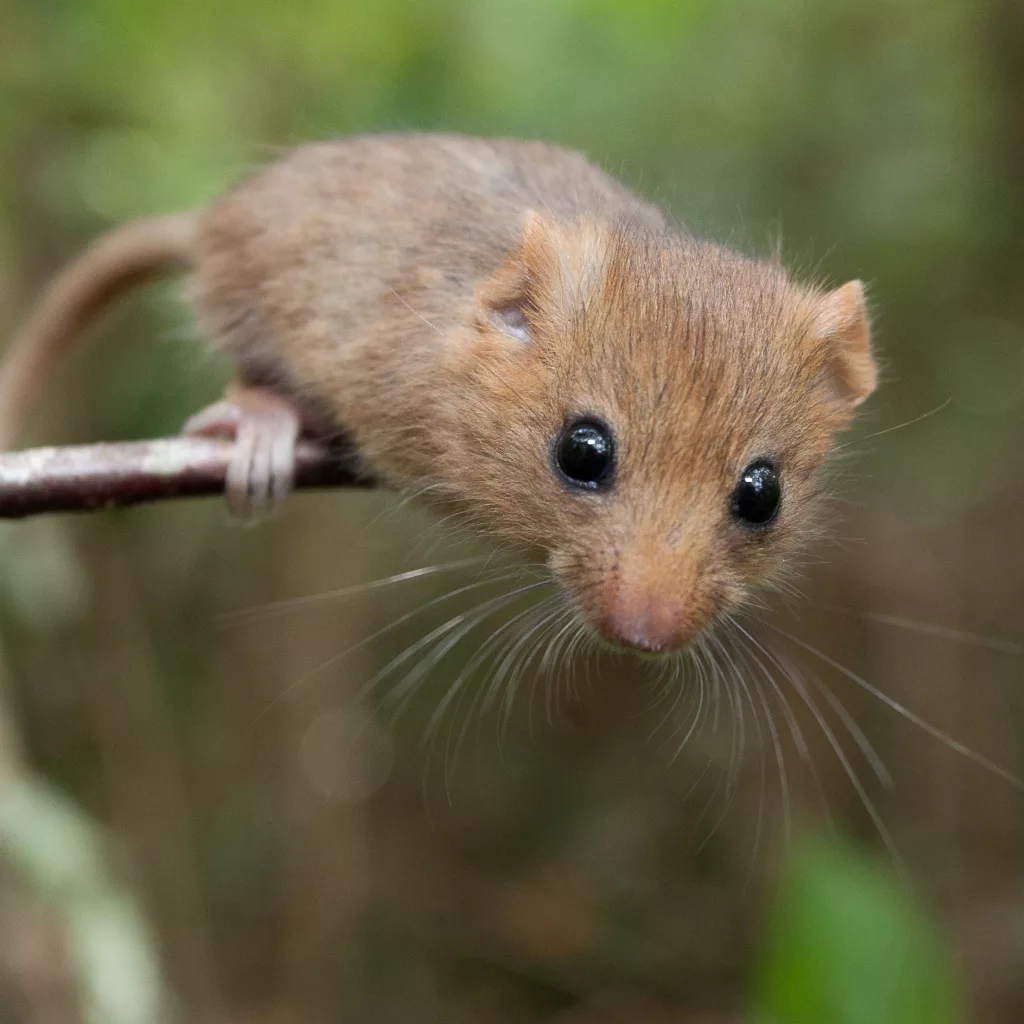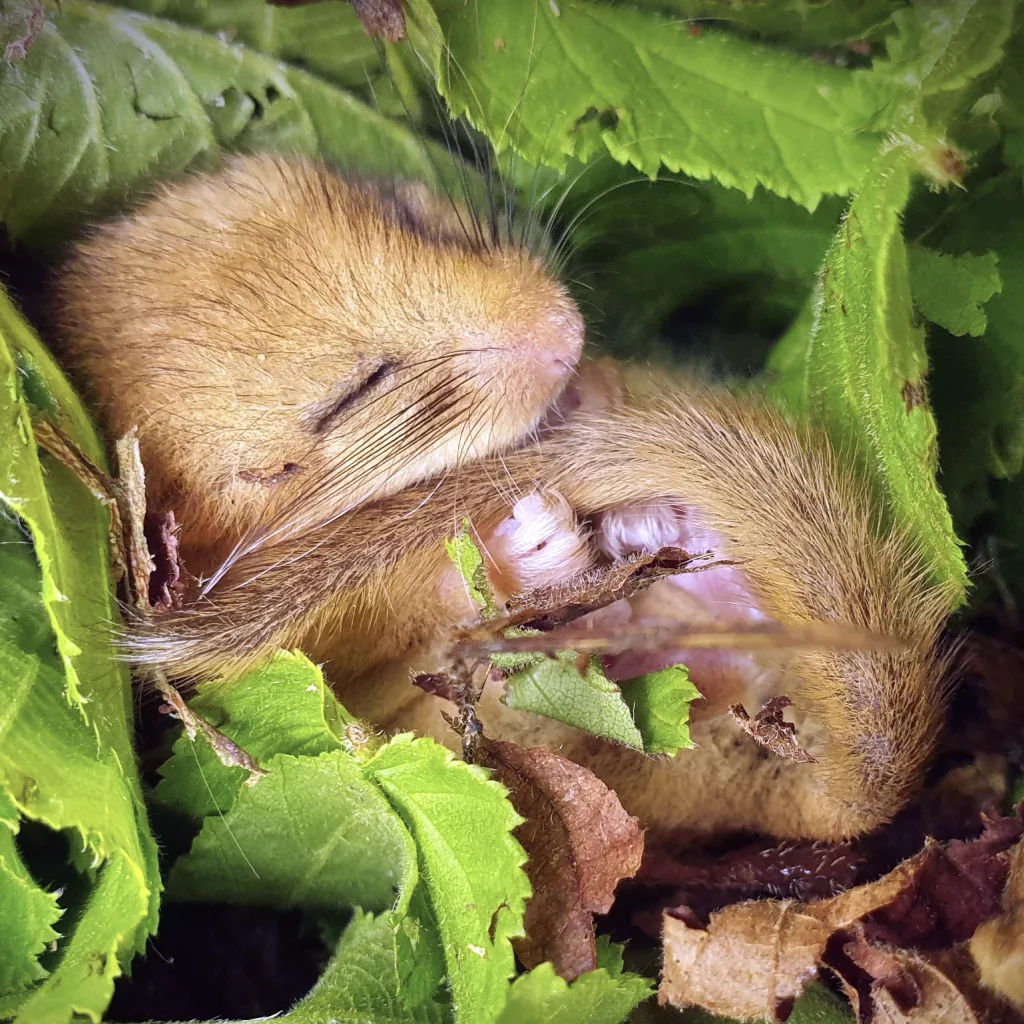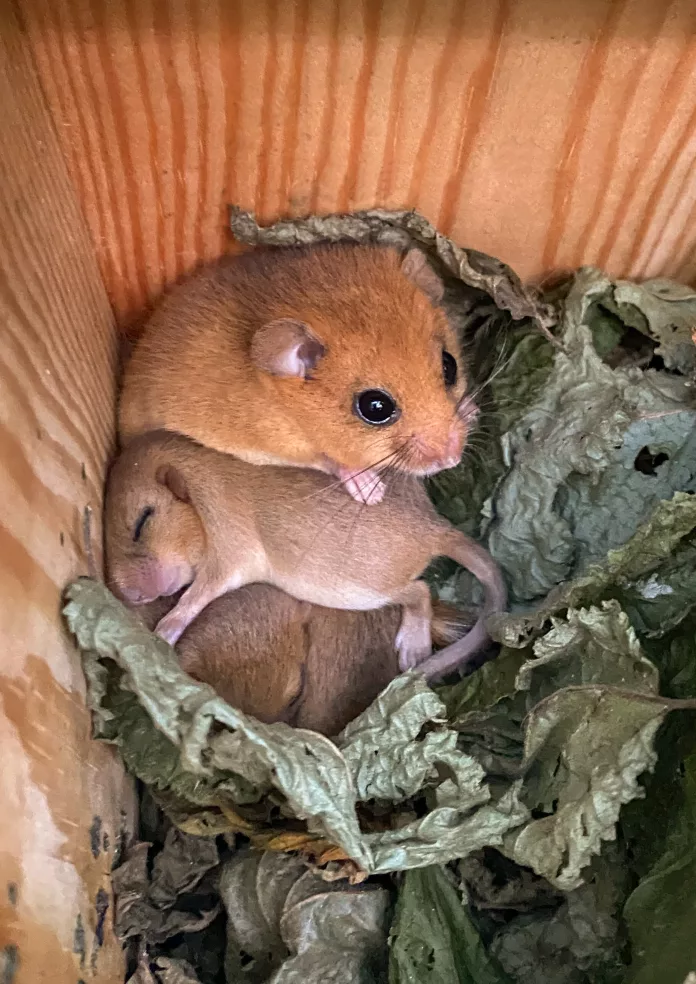- Native dormice populations are thought to be locally extinct from 20 English counties since Victorian times
- Habitat loss and degradation, compounded by climate change, are cited as the main reasons for the decline in the new ‘State of Britain’s Dormice 2023’ report
- The report reiterates the need for dormice to be classified as ‘Endangered’ on the IUCN Red List, rather than ‘Vulnerable’
- Conservationists to now monitor a greater diversity of habitats where dormice might be present, to gain a more complete picture
- Despite the alarming topline statistics, PTES’ annual reintroduction programme, and other conservation projects, are making a difference locally and ensuring a future for dormice
A landmark report published today [10th November 2023] by wildlife charity People’s Trust for Endangered Species (PTES) reveals that Britain’s native hazel dormice (Muscardinus avellanarius) population has declined by a staggering 70% since 2000 and has been lost from 20 English counties since the Victorian times.
Hazel dormice are charismatic, small, native rodents with soft caramel fur, a furry tail and big black eyes. They’re a flagship species for the management and conservation of woodlands and hedgerows, and are a key indicator species, meaning where there are dormice there’s usually a wider animal and plant diversity too. Yet despite their endearing appearance, they’ve experienced a historic and catastrophic decline.

The State of Britain’s Dormice 2023 report is the most up-to-date and comprehensive overview of how Britain’s dormice is faring. Habitat loss, degradation and poor management of Britain’s woodlands and hedgerows, compounded by a changing climate, are cited as the main reasons for the decline. It’s thought that native dormouse populations have become locally extinct in 20 English counties since Victorian times; dormice have been lost from Staffordshire, Northumberland and Hertfordshire since the last State of Britain’s Dormice report was published in 2019.
Dormice may also be at greater risk of extinction than recognised by their current classification of ‘Vulnerable’. The new report, and other recent research, suggest that dormice should be classified as ‘Endangered’ on the IUCN Red List. A revised classification would make them a higher-priority species and could result in increased targeted conservation efforts, which would help in reversing their chronic decline.
Data collected for this report is from PTES’ National Dormouse Monitoring Programme (NDMP) – the longest-running small terrestrial mammal monitoring programme in the world – which began in 1990. PTES and volunteers regularly check hundreds of dormouse nest boxes located at NDMP woodland sites across the country and record dormouse numbers. This gives a valuable insight into how populations are changing in our woodlands, but the report highlights the need for increased surveying to take place in addition to NDMP checks, and a greater diversity of habitats.
“The wealth of data from our monitoring programme gives a unique insight into how dormice are faring and contributes to major reports such as the recent State of Nature, which drives wider conservation efforts. If the decline continues at the same rate, in another 30 years dormouse populations will have fallen by 94% since 2000, which we simply cannot let happen.”
“Armed with the latest facts we need to continue pushing for dormice to urgently be reclassified as ‘Endangered’ on the IUCN Red List, and we need to start rolling-out more footprint tunnel surveys (as well as nest box checks) in non-woodland habitats such as hedgerows, scrub, roadside and railway verges. Footprint tunnels will allow us to gain a more complete picture of how dormice are faring across multiple habitats rather than just woodlands. Once we have data from non-woodland sites too, we can target conservation efforts more widely which we hope will start to reverse the decline.”
Ian White, Dormouse & Training Officer at People’s Trust for Endangered Species
Despite the alarming topline statistics, there is a glimmer of hope for dormice as PTES, partners and volunteers continue to work tirelessly to combat the ongoing decline. As well as running the NDMP, PTES manages the annual dormouse reintroduction programme, which continues to bolster existing populations. Since 1993 when the first reintroduction took place in Cambridgeshire, PTES and partners have now released over 1,112 hazel dormice into 25 different woodlands in 13 counties, with supplementary releases taking place in some areas to improve genetic diversity. This initiative has ensured that dormice are now present in six English counties they had previously been lost from, most of which are in the Midlands or northern England.

Large-scale landscape projects to restore and connect prime dormouse habitat have also been implemented in Warwickshire and north Wales, hedgerow planting – offering dormice safe passage and nesting sites between woodlands – has taken place in Yorkshire and Hampshire, and volunteer dormouse groups across the country continue to monitor and record local populations.
PTES also launched the Dormouse Footprint Tunnel Survey in 2022 to begin surveying non-woodland habitats and offers training for woodland managers to encourage them to manage their land more sympathetically for dormice and other species. The charity also funds vital research to improve our understanding of dormouse ecology and continues to install innovative arboreal dormouse bridges crossing major roads or other infrastructure, which are growing in number.
“Dormice continue to face an uncertain future as our climate and countryside change. Declines on this scale cannot be fixed overnight, so it will take time before we see if our conservation work is effective. We know what works for dormice, but we urgently need increased funding to implement this nationally. Hope is not lost as reintroductions, monitoring, research and landscape projects offer a lifeline – and some populations appear to be thriving – but we need to do everything we can on a much bigger scale to prevent the worst case from happening.”
Ian White
To read the full report, and to find out more about PTES’ dormouse conservation work, visit: www.ptes.org/dormice




















